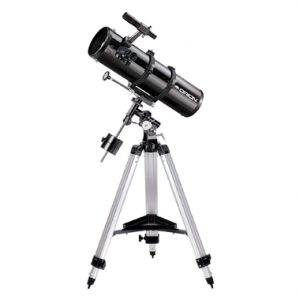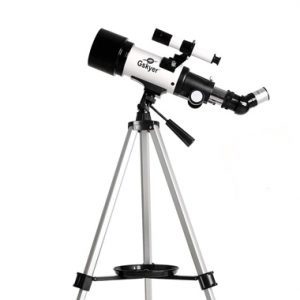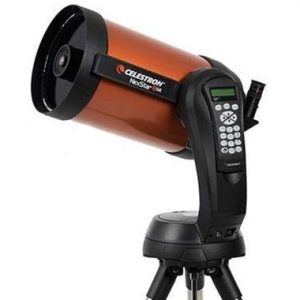Telescope vs Microscope: What’s the Difference?
Last Updated on
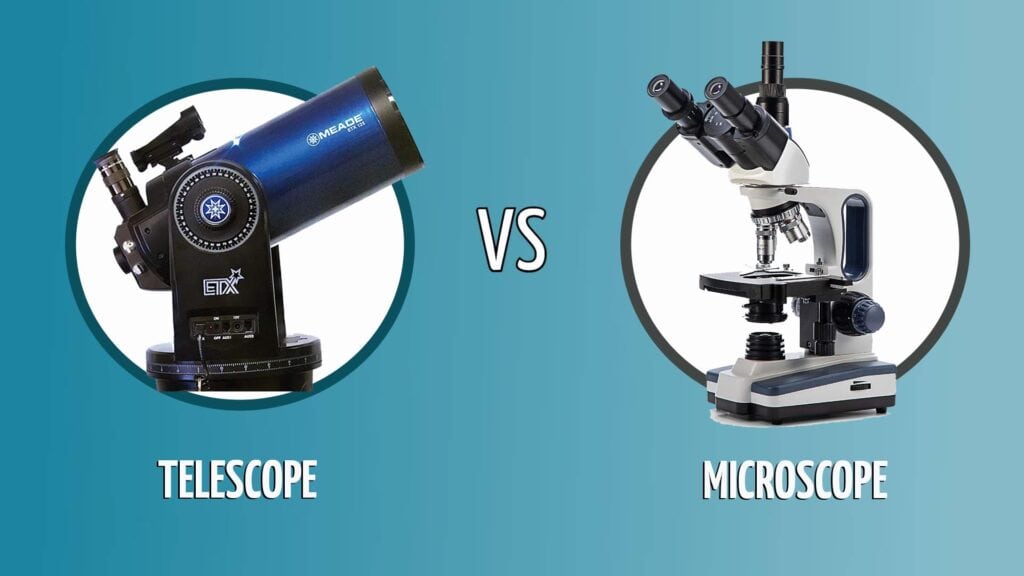
Optical instruments have been in use since at least the early 1600s, allowing humans to expand their viewing possibilities far beyond what is visible to the unaided eye. And despite their apparent differences, telescopes and microscopes use similar technologies to enhance the viewing capabilities of the naked human eye.
While telescopes are designed to view large, distant objects like stars and planets, microscopes home in on the tiny details of living structures like bacteria and viruses. With both tools acting as favorite instruments of professional and amateur scientists, both telescopes and microscopes have shown us a clearer picture of the intricate workings of our natural world. That being said, let’s take a detailed look at telescopes vs microscopes.
Telescope Overview
Telescopes use mirrors, lenses, or a combination of the two to observe distant objects. Originally developed in the Netherlands in 1608, the telescope became more widely known thanks to Galileo building one in 1609. He famously used a telescope to observe celestial objects, and his proposal of the sun as center of the observable universe was both hugely influential and highly controversial.
Types of Telescopes
From their humble origins as a simple tube with mirrors for collecting and focusing light, telescopes have developed into a wide array of specialized types. Some of the most notable include:
- X-ray and Gamma-ray telescopes which specialize in detecting light outside of the visible spectrum
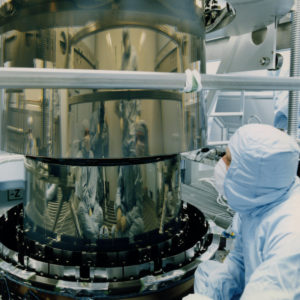
Applications
Anyone interested in astronomy will become intimately familiar with the telescope, as it is the tool of choice for both amateur and professional astronomers.
By creating increasingly powerful telescopes that can produce images of more than just the visible spectrum of light, scientists have opened whole new fields of astronomical study that are shedding light on the formation of life in the universe.
At home, even a basic telescope can be used to locate and observe planets, moons, and stars in the night sky. By tracking the movement of celestial bodies over time, astronomy hobbyists can often feel closer to the continual movement and change of the world around them.
Lenses & Mirrors
For anyone looking to purchase a telescope for use at home, the choice between a reflecting and a refracting telescope will be your most important concern.
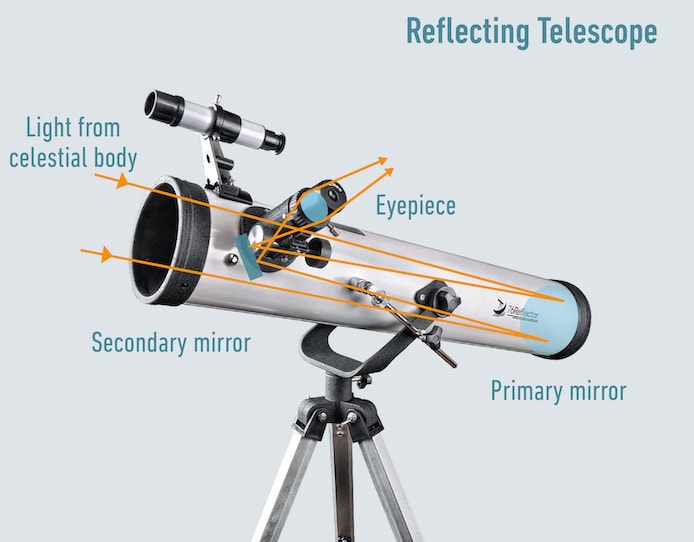
Where reflecting telescopes use mirrors to produce their images, refracting telescopes use a series of lenses. Given the same magnification power, both styles of telescope will produce a comparably clear image for hobbyists. Since it is cheaper to produce, the reflecting telescope is a more common choice for at home use.
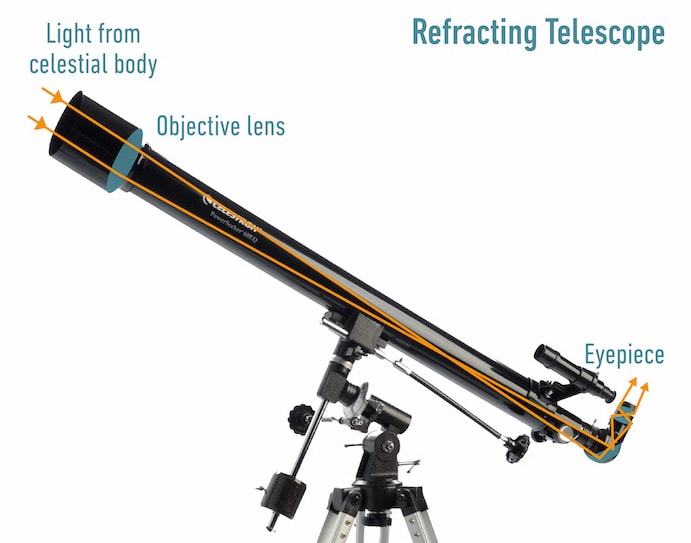
Magnification
Expressed as a relationship between the length of the telescope and the length of the eyepiece, a telescope’s magnification rating determines both how far it can observe and how clear the images it produces will be. Adjusting the size of a telescope’s eyepiece will change this ratio, allowing for more precise viewing at specific focal ranges.
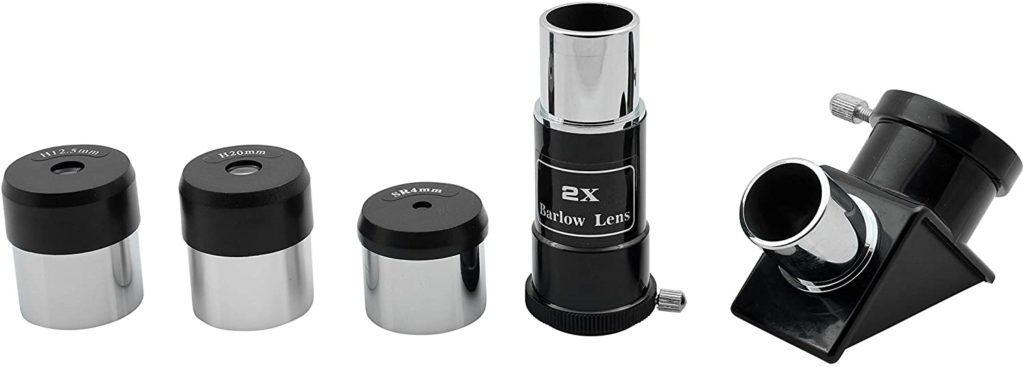
Focal Length
Used to measure both the total length of the telescope as well as the length of the eyepiece, the focal length (in mm) of a telescope will determine the tool’s field of view. For at home astronomy, a telescope with a 70mm focal length will provide plenty of power to observe much of the night sky. Your telescope’s focal length is typically found on the diopter tube between the optical tube and the eyepiece.
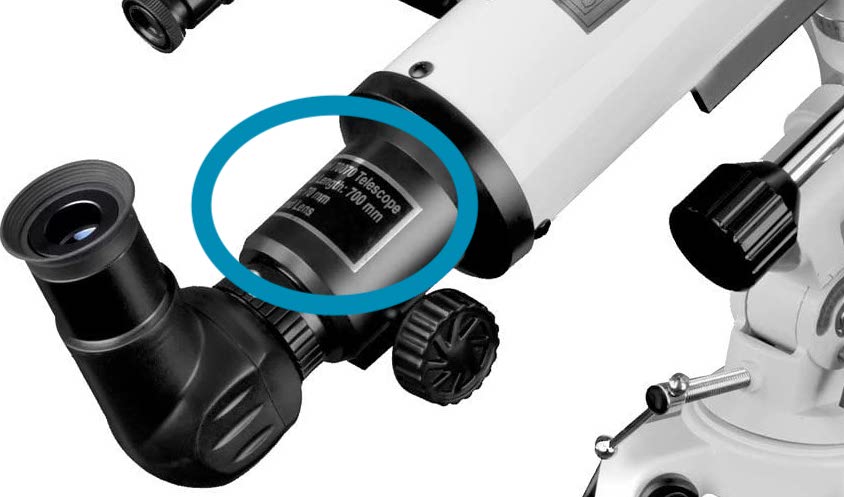
Eyepiece
The most easily interchangeable element of a telescope, eyepieces allow the user to change the total magnification and field of view for their optical instrument. Different eyepieces will offer varying distances of eye relief, the distance between your eye and the eyepiece where you’re able to see an image.
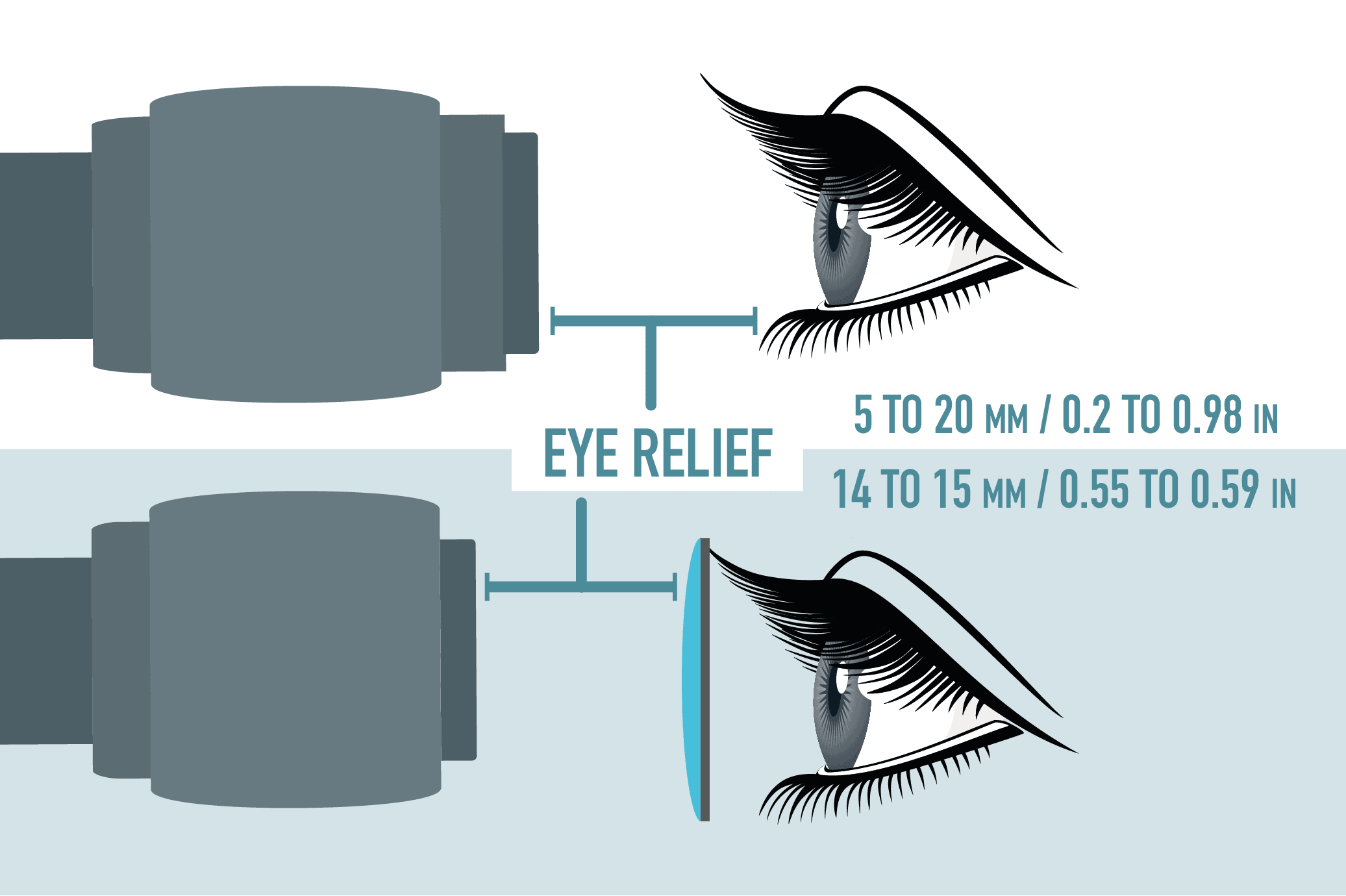
Field of View
Most telescope eyepieces will be marked with a number known as the apparent field of view, or AFOV, which is measured in degrees. It represents how much of a portion of the night sky the telescope can potentially view. Divide this number by the total magnification of the telescope, and you’ll be able to identify the true field of view, or how many degrees of the sky are actually visible through your telescope’s eyepiece.
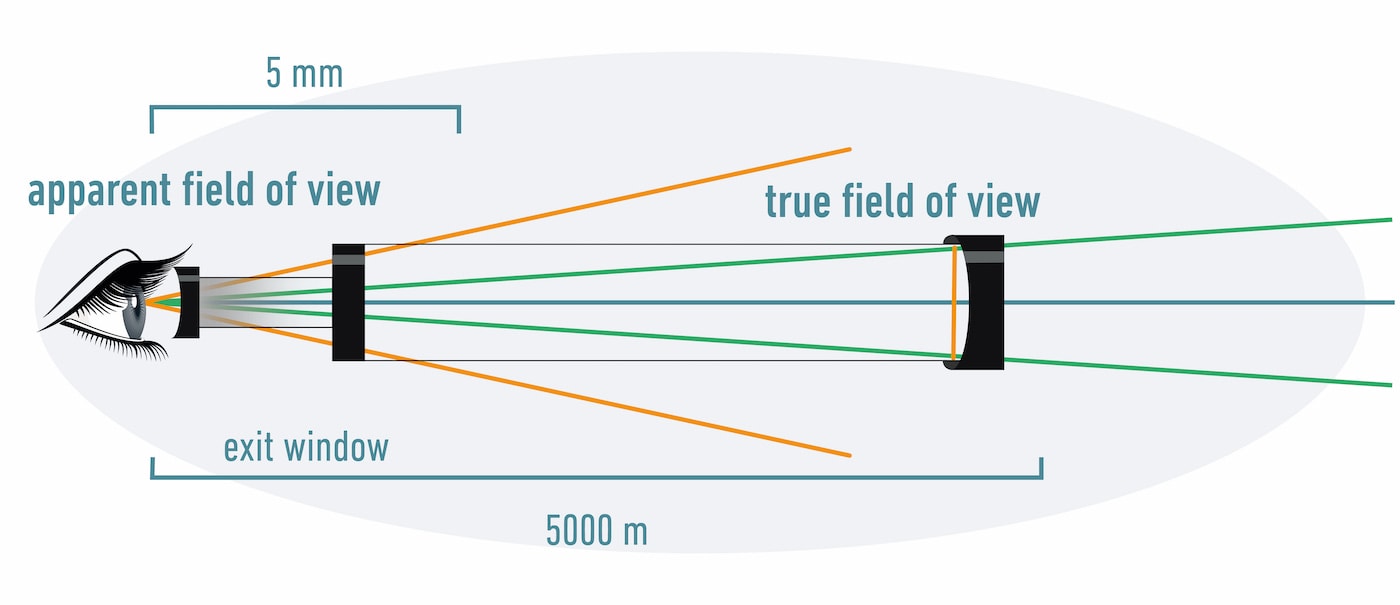
Accessories and Modifications
A well-built and stable mount is essential to any telescope’s smooth operation. Designed to support the bulky mass of a telescope, the stand allows for accurate aiming and helps produce a clearer final image. There are three main styles of telescope mounts:
Altazimuth mounts produce only vertical and horizontal motion, with slow-moving knobs that allow for precise adjustments. Some altazimuth mounts are now available with computerized controls for programmable observation.
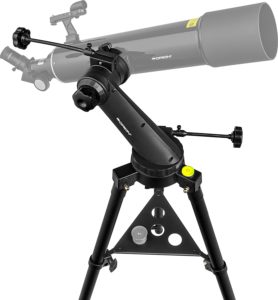
Dobsonian mounts are a natural extension of the altazimuth mount, held extra stable by the addition of a heavy platform on the ground. They’re designed to support oversized reflection telescopes and help produce exceptionally clear images.
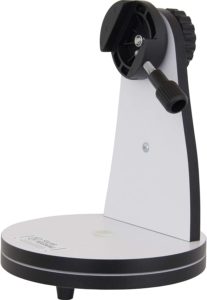
Equatorial mounts are designed for easy tracking as stars and planets move through the night sky. Some are equipped with a motorized clock drive that keeps a constant rotation matching with that of the Earth, allowing for long-exposure astrophotography.
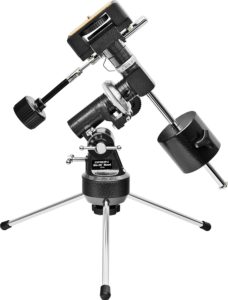
Microscope Overview
Derived from the humble magnifying glass, a curved lens used as far back as the 5th century BC in Greece, today’s microscopes are a technological marvel that allows for the viewing of incredibly tiny objects. Eyeglasses are a simple example of a microscope, and the more widely known variety is properly called a compound microscope.
Since the mid-1600s, microscopes have been used to study anatomical structures that are invisible to the naked eye. More recently, microscopes have been adapted to use multiple varieties of non-visible spectrum energies to observe increasingly minute details of the natural world.
Types of Microscopes
Microscopes are commonly categorized by how they generate their images – via light, photons, electrons, or scanning probes. The two most widely known types of microscopes include:
Optical microscopes utilize one or more lenses to produce a magnified image of a sample placed within the tool’s field of vision. They use refractive glass to focus light onto the eye and have a practical maximum magnification power of 1500x. Optical microscopes are the most widely available and often the most affordable instruments in this category.
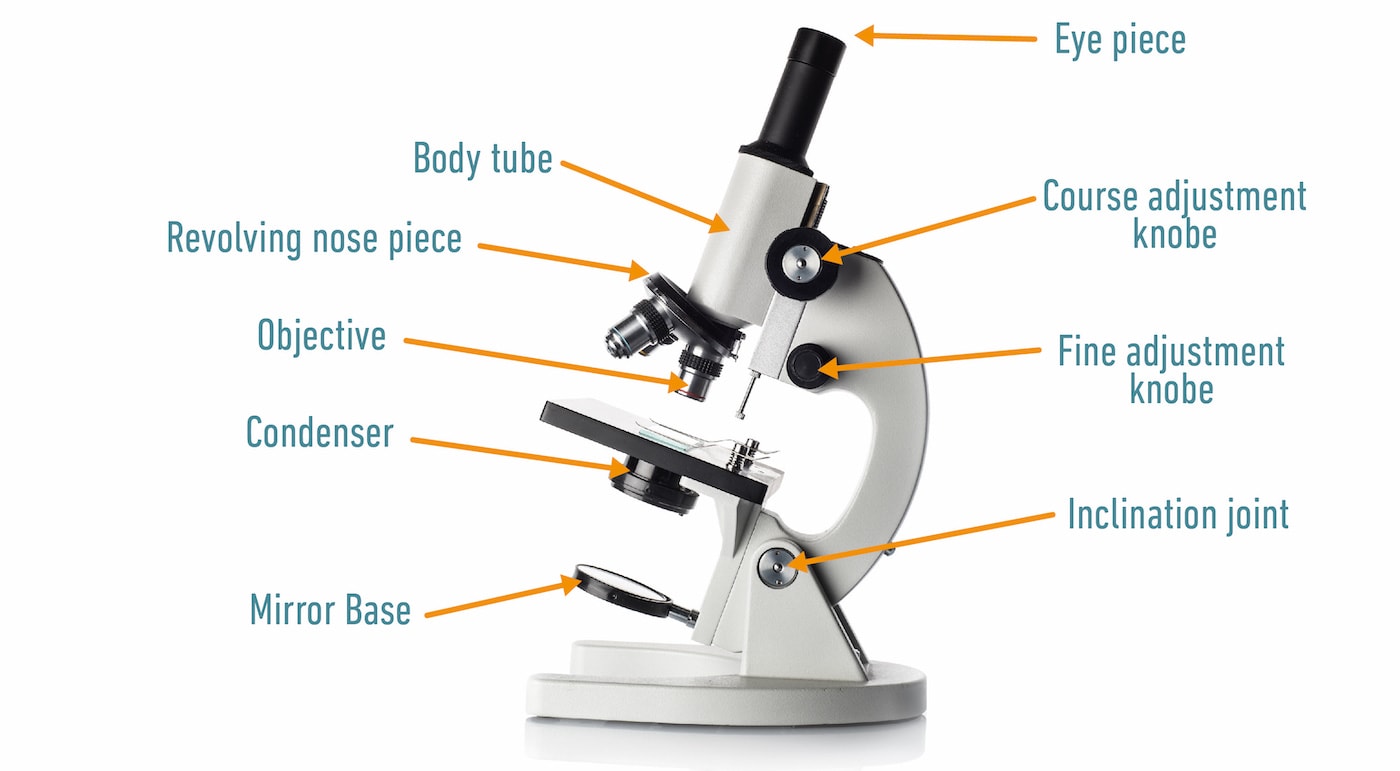
Electron microscopes focus a high energy beam of electrons on a sample, producing a composite image in combination with a magnetic lens. Divided in transmission electron microscope (TEM) and scanning electron microscope (SEM) categories, they are capable of magnifying images up to 15 million times their original size.
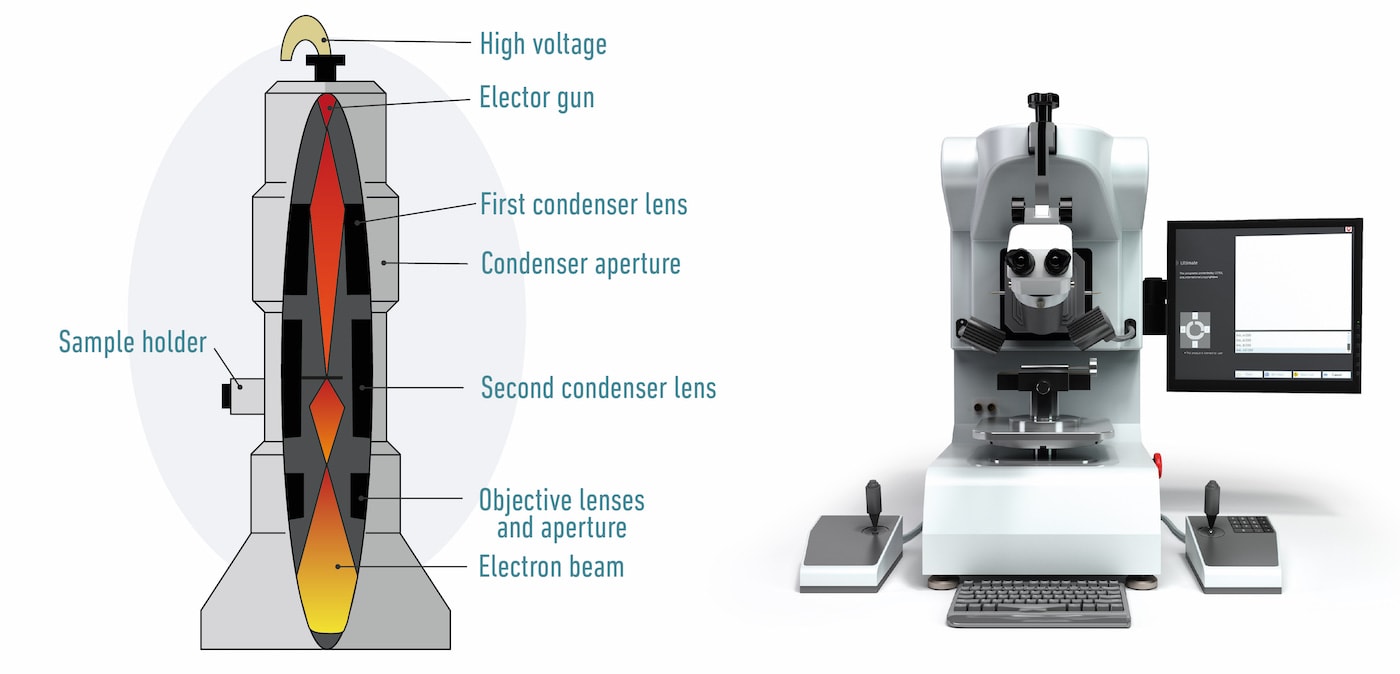
Applications
The tool of choice for observing objects too small to be seen with the unaided eye, microscopes have found their way into scientific research in multiple disciplines.
Biology is the microscope’s primary area of use, where you can find scientists studying the minute anatomical details of organic substances to better understand their structure and develop new technologies and products.
More powerful microscopes are seen in cutting-edge physics research, where scientists are studying the smallest known forms of matter for hints as to how life came to be and ultimately, the nature of reality itself.
Lenses & Light Sources
By combining an objective lens near the specimen with an eyepiece on the opposite end, compound microscopes produce an enlarged image of the specimen in question. Focusing mechanisms change the position of the lenses, allowing for multiple levels of magnification in a single piece of equipment.

Magnification
Multiplying the power of the objective lens by the power of the eyepiece will give you a microscope’s final magnification rating, listed as how many times larger the produced image is than the original specimen. Common optical microscopes may produce magnifications up to around 1500x, while electron or scanning probe microscopes may magnify up to 1 million times or more.
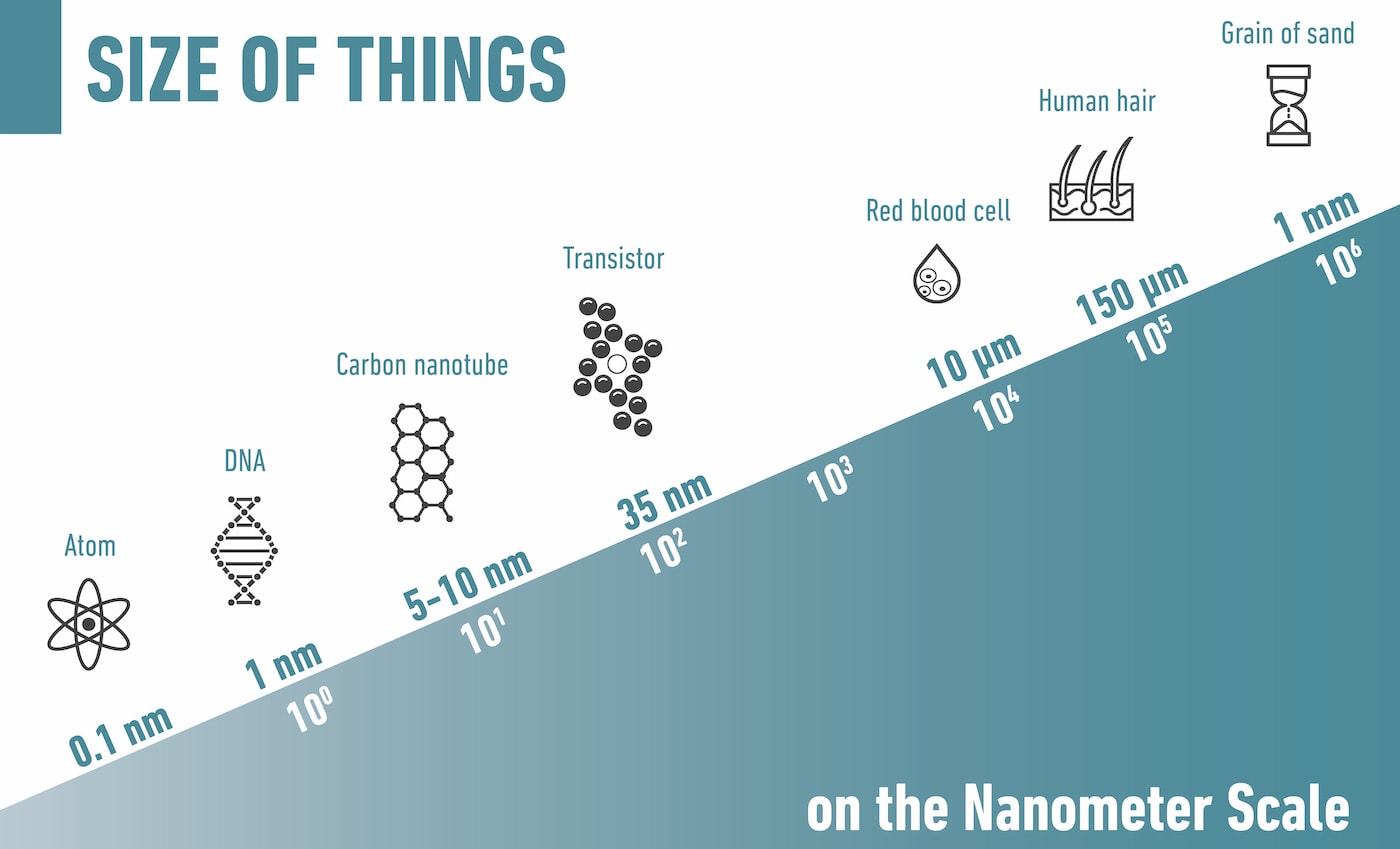
Focal Length
Measured as the distance between your microscope’s objective lens and the top of your specimen, the focal length of a microscope is what is required for an image to be in view for a microscope that is in-focus. As magnification increases, the focal length (and therefore, available field of view) decreases.
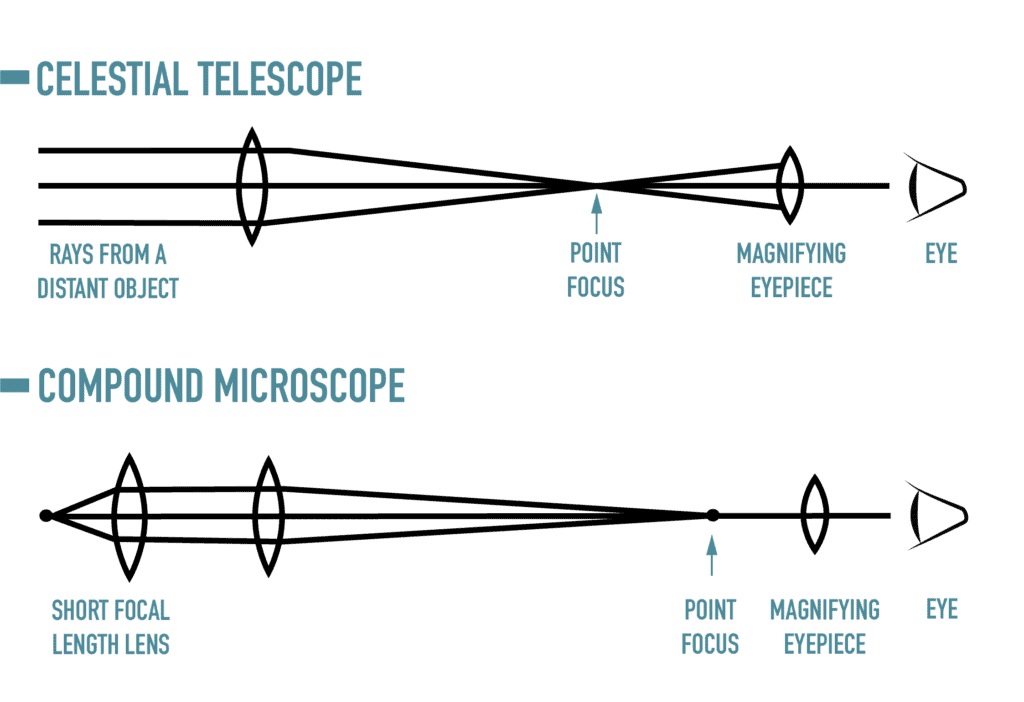
Eyepiece
Standard microscope eyepieces for optical microscopes have a 10x magnifying power, though you can find specialized eyepieces from 5x to 30x. Occasionally, eyepieces may include foam or soft plastic eye cups for more comfortable viewing and light pollution reduction.
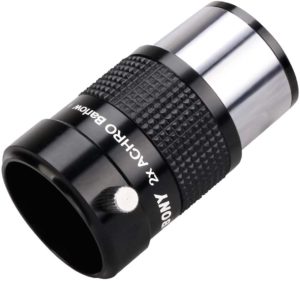
Accessories and Modifications
Due to their extensive use in a wide variety of scientific research fields, there are accessories available to customize even the most basic microscope for any project you might have. Lens oils and lens cleaners will keep your eyepiece and objective lens in tip-top shape, slide dispensers can prevent unnecessary contamination during slide preparation, and a wide variety of light bulbs can produce a customized final image.
When to Use a Telescope
If you’re thinking of taking up an astronomy hobby, a telescope is the right choice for you. Even the most basic of telescopes is specially designed to allow for viewing distant objects, which a microscope will never be able to do.
When to Use a Microscope
Considering a career in research science, or maybe you just have an interest in the smaller side of the natural world? A microscope will be your tool of choice. Where telescopes allow for viewing distant objects, microscopes specialize in magnifying tiny details of the world that’s available right at your fingertips.

Price Comparison
For anyone looking to get into a new hobby, the cost of buying a beginner-friendly microscope or telescope will be about the same; plan on spending around $100 for a scope that’s well-made and has the features you’ll need. From there, the sky is the limit for how much you might be willing to spend, with top-quality hobbyist-use microscopes and telescopes easily costing $1000 or more.
Telescope vs Microscope: Which One is Right for You?
Though they may be built on similar basic technologies, the applications for telescopes and microscopes differ wildly. Are you looking for a tool that will help you explore the smallest parts of the world, or the largest? Either way, equipping yourself with the appropriate instrument for the job will allow you to discover a new part of the world around you.
About the Author Robert Sparks
Robert’s obsession with all things optical started early in life, when his optician father would bring home prototypes for Robert to play with. Nowadays, Robert is dedicated to helping others find the right optics for their needs. His hobbies include astronomy, astrophysics, and model building. Originally from Newark, NJ, he resides in Santa Fe, New Mexico, where the nighttime skies are filled with glittering stars.
Related Articles:
Monocular vs Telescope: Differences Explained (With Pictures)
Holy Stone Drone Review of 2024 – Pros, Cons, and Verdict
Ultraviolet Light vs Black Light: What’s the Difference?
Light Waves vs. Sound Waves: The Key Differences
Infrared vs. Thermal Cameras: How Are They Different?
Far Infrared vs Near Infrared: What’s The Difference?
Mottled Duck vs. Mallard vs. Black Duck: What’s the Difference?
Shutter Speed vs Frame Rate: Pros, Cons, & Difference

